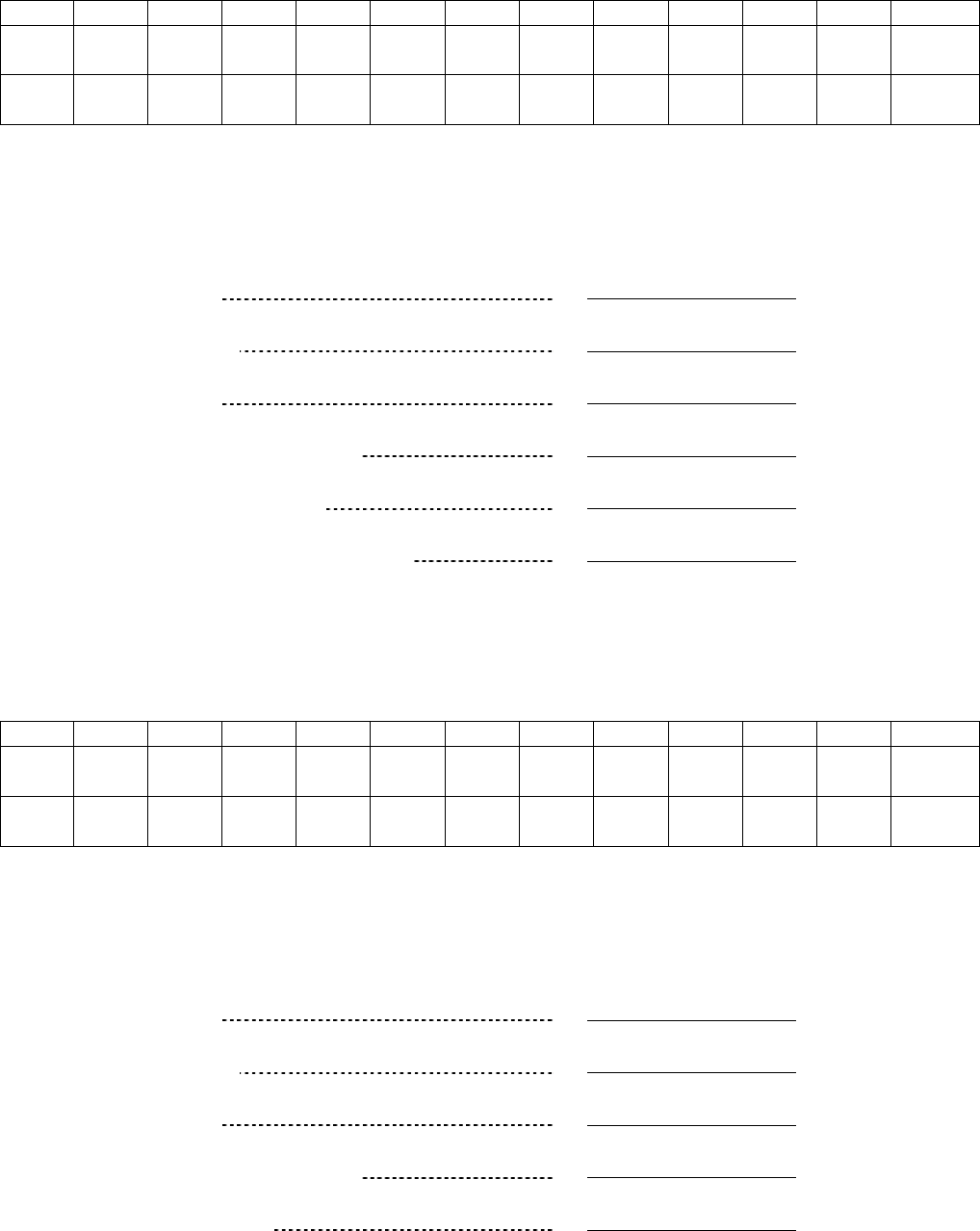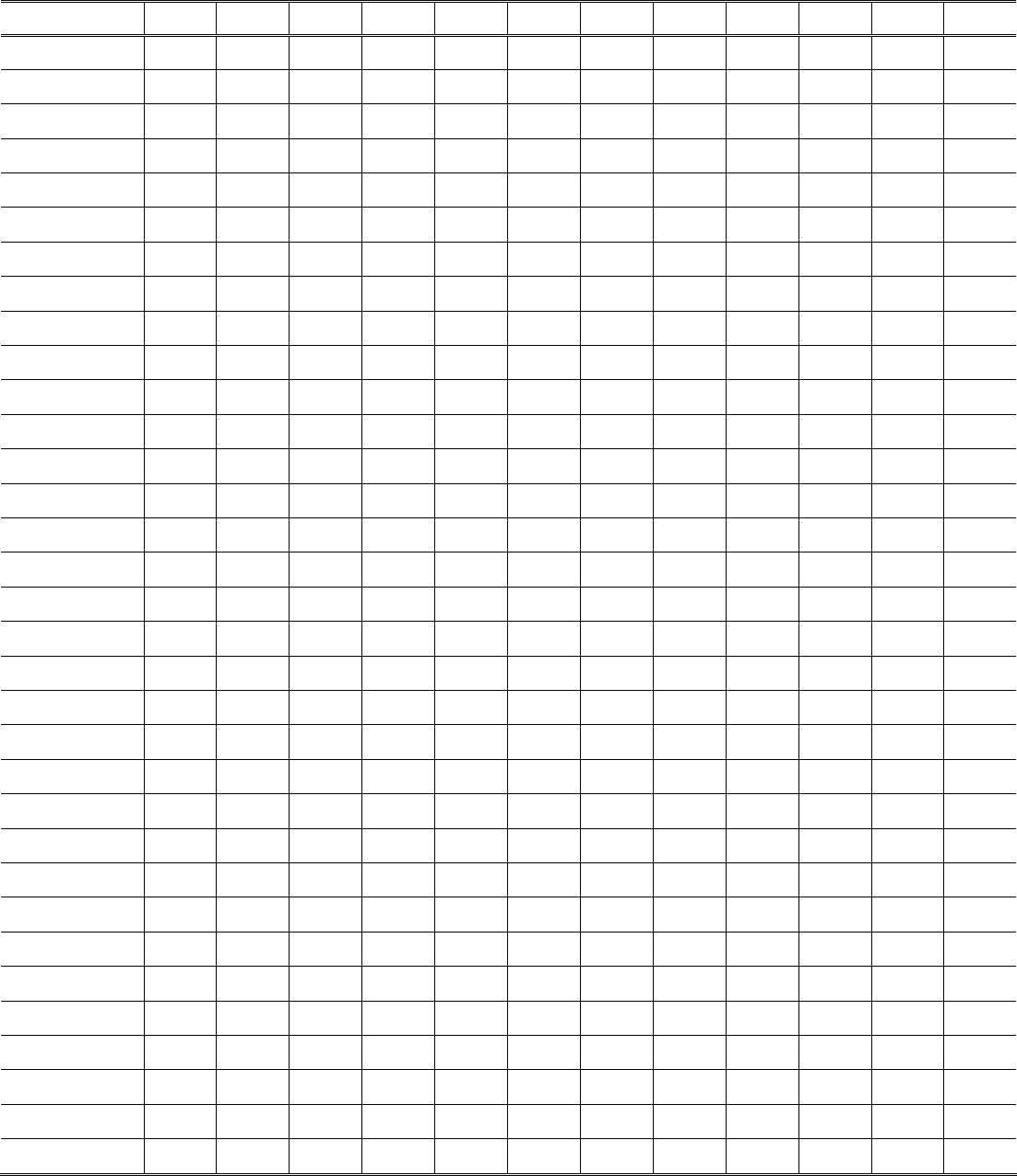
Name of Member
Address
Age
Grade in School
County
Leader
- 2 -
INSTRUCTIONS
This record book was developed to aid 4-H’ers in keeping more accurate records in their poultry
project. To determine the financial situation for your poultry project, good record keeping is important.
1. Keep a record of expenses and receipts for pullet growing on page 3.
2. The pullet growing financial statement is on page 4. This record should be completed at the end of
the pullet growing project.
3. On page 5, write a project story that tells about your experiences in pullet growing.
4. Keep a record of expenses and receipts for egg production on pages 6 and 7.
5. The financial summary for egg production is on page 8. This record should be completed at the
end of the egg production phase of the project.
6. On page 9, write a story discussing your experiences with the egg production project.
7. On page 10, keep a monthly record of mortality that occurs during the pullet growing or egg
production phases of the project. Also, keep a record showing all uses of the chicks or hens.
8. A daily record for egg production on page 11 can be removed and kept in a convenient location.
REQUIREMENTS OF POULTRY PROJECTS
Pullet Growing Project
• Start a minimum of 25 pullet chicks.
• Keep records.
• Participate in the county show and sale if the chicks were received free from the county chick
project.
• Give demonstrations.
• Read and study poultry literature.
Egg Production Project
• Start a minimum of 10 laying hens.
• Keep records.
• Give demonstrations.
• Read and study poultry literature.
H. Charles Goan
Former Professor and Leader
Animal Science – Poultry

- 3 -
EXPENSES AND RECEIPTS FOR PULLET GROWING
Expenses and receipts should be recorded on this page starting at the time you receive your chicks.
At the end of the pullet growing project, the expenses and receipts are to be transferred to the Pullet
Growing Financial Statement.
Include in expenses the value of: Include in receipts the value of:
Chicks bought or given free Pullets kept for egg production
Feed purchased – amount, kind and cost Pullets sold
Home-grown grain used Birds sold for meat
Litter Birds used at home for meat
Cost of heat for brooding Prize money
Equipment purchased or homemade Miscellaneous receipts
Miscellaneous expenses
Expenses
Receipts
Date Description and quantity $ Date Description and quantity $
TOTAL $ TOTAL $

- 4 -
PULLET GROWING FINANCIAL STATEMENT
Date project started Date project completed
EXPENSES:
Chicks No. Cost $
Equipment purchased Cost $
Feed (Starter and grower) Lbs. Cost $
Home grain Lbs. Cost $
Miscellaneous expenses Cost $
Pullets returned to county show and sale No. Value $
TOTAL EXPENSES $
RECEIPTS:
Sale of pullets No. Value $
Pullets kept for egg production No. Value $
Male birds kept No. Value $
Birds used at home for meat No. Value $
Miscellaneous receipts Value $
TOTAL RECEIPTS $
TOTAL EXPENSES $
NET GAIN OR LOSS $

- 5 -
PROJECT STORY FOR PULLET GROWING
Write an interesting story telling what you had done this year with your pullet growing project. Items that can be
mentioned are (1) preparations made before the chicks arrived, (2) the brooding, feeding, watering, sanitation
and general management program, and (3) the pullet show and sale.

- 6 -
EXPENSES AND RECEIPTS FOR EGG PRODUCTION
Expenses and receipts should be recorded on this page starting at the time pullets reach maturity and
begin laying eggs. At the end of the egg production year, the expenses and receipts are to be
transferred to the Egg Production Financial Statement.
Include in expenses the value of: Include in receipts the value of:
Pullets transferred from the pullet Hens remaining at the end of the egg
growing project, feed purchased, production year, eggs sold, eggs eaten
home grown grain and oyster shell, at home, hens used for meat and
litter, equipment, egg cartons and miscellaneous items.
miscellaneous items.
Expenses
Receipts
Date Description and quantity $ Date Description and quantity $
Total transferred to Total transferred to
next page $ next page $

- 7 -
EXPENSES AND RECEIPTS FOR EGG PRODUCTION (continued)
Expenses
Receipts
Date Description and quantity $ Date Description and quantity $
TOTAL $ TOTAL $

- 8 -
EGG PRODUCTION FINANCIAL STATEMENT
Date project started Date project completed
EXPENSES:
Birds on hand from previous year No. Cost $
Feed purchased Lbs. Cost $
Home grain fed Lbs. Cost $
Equipment purchased Cost $
Pullets reared or purchased No. Cost $
Other expenses Cost $
TOTAL EXPENSES $
RECEIPTS:
Eggs sold Doz. Value $
Eggs used at home Doz. Value $
Hens sold No. Value $
Hens used at home for meat No. Value $
Other receipts Value $
Birds on hand at end of year No. Value $
TOTAL RECEIPTS $
TOTAL EXPENSES $
NET GAIN OR LOSS $

- 9 -
PROJECT STORY FOR EGG PRODUCTION
Write an interesting story about your egg production project. You should describe your management program
which would include feeding, lighting, record keeping, egg gathering and general sanitation. In addition,
describe the market for any eggs or hens you may have sold. Pictures or illustrations may be useful.

- 10 -
MORTALITY RECORD FOR PULLET GROWING
Jan Feb Ma
r
A
p
r
Ma
y
June Jul
y
A
u
g
Sept Oct Nov Dec TOTAL
No.
Died
No.
Culled
DEPLETION SUMMARY
Number
Birds died
Birds culled
Birds sold
Birds consumed at home
Male birds remaining
Pullets kept for egg production
MORTALITY RECORD FOR EGG PRODUCTION
Jan Feb Ma
r
A
p
r
Ma
y
June Jul
y
A
u
g
Sept Oct Nov Dec TOTAL
No.
Died
No.
Culled
DEPLETION SUMMARY
Number
Hens died
Hens culled
Hens sold
Hens consumed at home
Hens remaining

- 11 -
DAILY EGG RECORD
Date Jan Feb Mar Apr May June July Aug Sept Oct Nov Dec
1
2
3
4
5
6
7
8
9
10
11
12
13
14
15
16
17
18
19
20
21
22
23
24
25
26
27
28
29
30
31
Total No. Eggs
Total Doz. Eggs
Programs in agriculture and natural resources, 4-H youth development, family and consumer sciences, and resource development.
University of Tennessee Institute of Agriculture, U.S. Department of Agriculture and county governments cooperating.
UT Extension provides equal opportunities in programs and employment.
